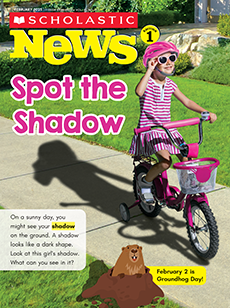A guide for using our resources
Children will discover how hermit crabs grow and find new shells to live in.
Science Focus: animal adaptations, seashore science
CCSS (and states that have similar standards): RI.1.1, RI.1.8, RI.1.9, W.1.2, RF.1.3.A, RL.1.1, L.1.1
Simple, spectacular ideas to boost your lessons.
Paired Text: A House for Hermit Crab by Eric Carle
Paired Text: A House for Hermit Crab by Eric Carle
- This classic is the perfect storybook to read with the article. You can use it for a mini lesson on fi ction vs. nonfi ction. As you read, point out ways you can tell that the book is fi ction (the story is made-up; the animals talk) and that the article is nonfi ction (it has facts; the animals do not talk).
Digraph Hunt: sh
Digraph Hunt: sh
- Work together to find and circle every sh digraph in the issue.
Hands-On Activity: Paper Plate Hermit Crab
Hands-On Activity: Paper Plate Hermit Crab
Skill: art, writing
Materials: construction paper, paper plates, pipe cleaners or small craft sticks, watercolors or markers, glue, googly eyes (optional)
- This colorful craft lets children show what they know about hermit crabs.
- Have each child decorate the paper plate with either markers or watercolors. This will be the crab’s shell.
- With the fingers of the handprint pointing down, have kids glue the paper plate to the thumb at the left side of the handprint.
- Have students attach pipe cleaners or small craft sticks to the heel of their handprint for eye stalks. For fun, they can glue googly eyes to the ends.
- Finally, give each child a sentence strip. Have children write a fact they learned about hermit crabs and glue it to the bottom of the hermit crab. You can also have them write the fact on the back of the shell.
